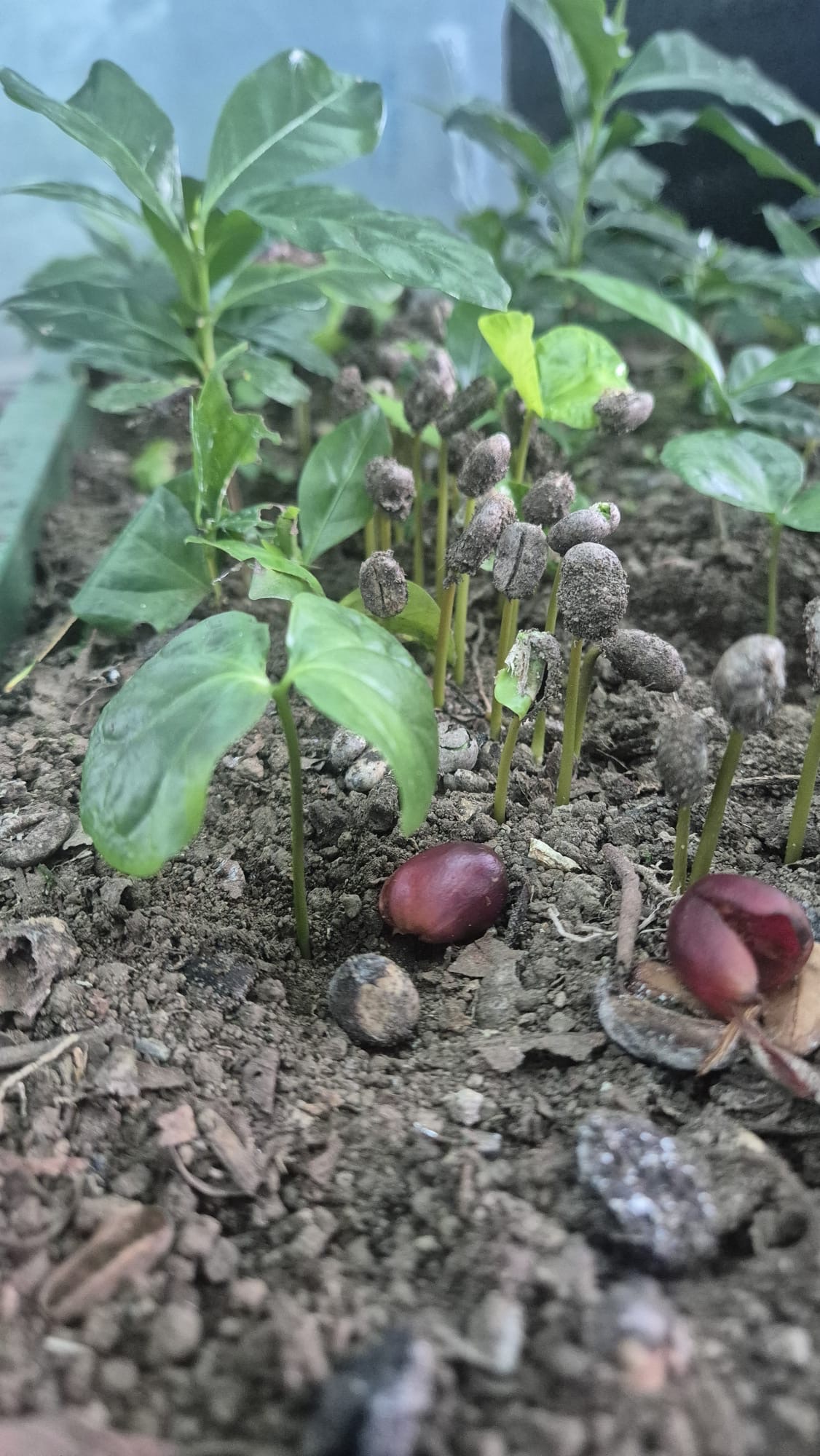Looking for how coffee is made today? Check out our detailed guide on the coffee production process: From Shrub to Cup – The Coffee Journey
Coffee is a staple of our daily lives. Whether it’s a cappuccino in the morning, an espresso after lunch, or a cold brew on a summer day – for many of us, coffee is a ritual. But where does this dark, aromatic drink actually come from? The history of coffee is as rich as its flavor: full of myths, trade adventures, cultural revolutions – and one often overlooked hero: fermentation.
The Legend of Kaldi: Discovering Coffee in Ethiopia
Coffee’s origins date back to 9th-century Ethiopia. According to legend, a young goat herder named Kaldi noticed his goats became especially energetic after eating certain red berries. Curious, he tried them himself and felt a boost. A nearby monastery experimented with the berries, brewed an infusion – and the first coffee was born. While this story is not historically verified, it’s often told as the mythical beginning.
Coffee in Yemen: From Highlands to Coffee Culture
Historically documented is coffee’s rise in 15th-century Yemen, especially in the city of Mocha. Sufi mystics drank coffee to stay awake during long prayers. From there, it spread throughout the Islamic world – to Mecca, Medina, Cairo, and Istanbul.
Coffeehouses: The Birthplace of Coffee Culture
In the great cities of the Ottoman Empire, the first coffeehouses opened in the 16th century. These “schools of wisdom” became hubs for social exchange, music, poetry, and politics – much to the displeasure of some rulers who feared their revolutionary potential. Still, nothing could stop coffee’s rise.
Coffee in Europe: From “Satan’s Drink” to Cultural Icon
In the 17th century, coffee arrived in Europe. It was introduced via Venice, and soon Paris, London, and Vienna followed. Initially controversial (some called it the “bitter drink of Satan”), coffee was soon embraced as a civilized, intelligent beverage. Coffeehouses became meeting places for intellectuals, artists, and entrepreneurs – and the cradle of European coffee culture.
Colonialism & Coffee Farming: The Global Spread of the Bean
With growing demand, European colonial powers began cultivating coffee in tropical colonies: Java, the Caribbean, Brazil. Large-scale production often involved exploitation and slavery – a dark chapter in coffee’s history that must not be forgotten.
Fermentation in Coffee: The Invisible Flavor Artist
What many don’t know: without fermentation, coffee wouldn’t be the drink we love today. Once harvested, coffee cherries undergo a microbial process. Depending on the method – “washed,” “natural,” or “honey processed” – yeasts and bacteria ferment the fruit pulp. This generates flavors that define the bean’s profile: from fruity acidity to chocolatey depth.
In the specialty coffee scene, producers now experiment with controlled fermentation using anaerobic tanks or selected microbes to create notes of pineapple, wine, or dark chocolate. Fermentation is key to modern coffee culture.
Coffee Today: Sustainability, Diversity, and New Trends
Today, coffee is grown in over 70 countries. The most common varieties are Arabica and Robusta. Coffee enjoyment is global: from Italian espresso to Turkish mocha to third-wave coffee focusing on origin, roasting, and fermentation.
Transparency, sustainability, and fair trade are increasingly important. Initiatives like direct trade or organic certification are setting new standards.
Conclusion: The History of Coffee Connects Cultures and Science
From the Ethiopian highlands to our cups, coffee has had a dynamic and inspiring journey. It connects cultures, inspires innovations, and brings people together – thanks in no small part to the microscopic world of fermentation.
So: next coffee, with a splash of history and a dash of microbiology, please!
